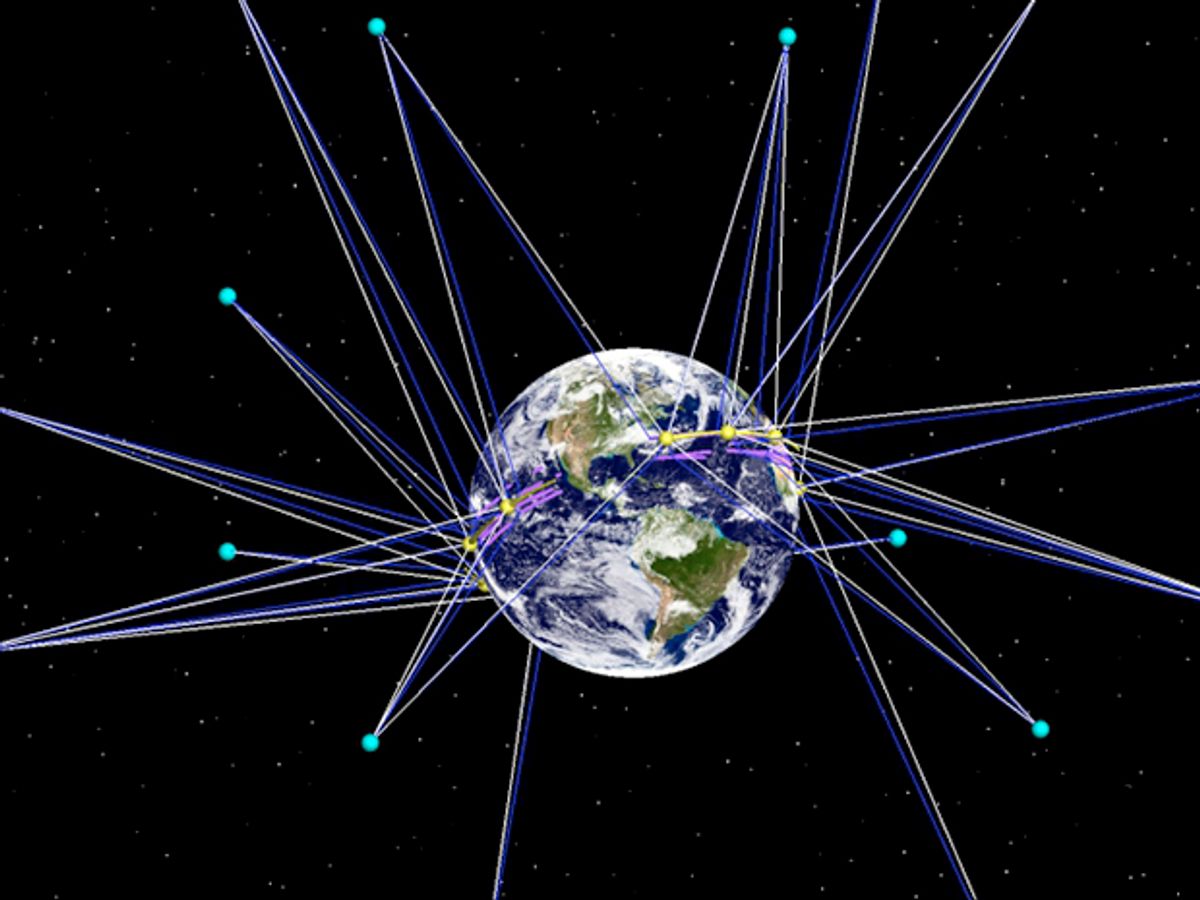Eight small NASA satellites and the existing GPS network could provide the first serious upgrade for hurricane intensity forecasting in decades. Once launched in a little less than a year, the mission’s boost to extreme weather prediction would go a long way toward giving authorities more time to plan coastal evacuations and prepare for the onslaught of 21st-century storms.
The Cyclone Global Navigation Satellite System (CYGNSS) consists of eight micro-satellites weighing just 27 kilograms each. NASA’s planned satellite constellation would have the capability of measuring wind speeds of up to 216 kilometers per hour; the equivalent of a category 4 hurricane. (That’s one notch weaker than Hurricane Patricia when it struck Mexico days ago.) The measurements—based on scattered GPS signals bouncing off the ocean’s surface—would work regardless of how heavy the rainfall was within the intense hurricane eyewalls where the storms’ most damaging wind forces exist.
Wind speed measurements inside hurricanes can currently prove tricky without the help of “hurricane hunter” aircraft flying reconnaissance missions inside the storms. That’s because existing weather satellites have difficulty measuring wind speeds inside storms due to radio absorption from heavy rain.
CYGNSS would solve that problem with the help of GPS satellite signals used for location and timekeeping services all over the world. Many GPS signals simply end up bouncing off the Earth’s land or ocean surface. Such reflected or scattered signals can provide valuable scientific information about the roughness of the ocean’s surface inside a hurricane. CYGNSS can then use computer algorithms to deduce the wind speed and hurricane intensity from that data.
Aaron Ridley, a professor of space weather at the University of Michigan and a lead on the CYGNSS project, explained the advantages of using GPS signals in a blog post:
One of the brilliant things about the CYGNSS satellites is that they don’t carry a transmitter. Instead, they use GPS signals, which are being transmitted by GPS satellites all day, everyday, across the globe. Some of these radio waves are measured by your smartphone to tell you where you are, but the vast majority of the signals are just absorbed by the ground, or reflected back to space. CYGNSS measures those signals that are reflected back to space. A benefit to using the GPS signals is that those radio waves go right through rain, so that CYGNSS can take measurements in the middle of a hurricane, just where other satellites don’t work well.
An added bonus of using GPS signals is that the CYGNSS satellites don’t have to carry their own radio transmitters. That reduced the mission’s overall weight and saved money, according to Ridley. CYGNSS cost just US $102 million to develop, build and test; a relative bargain for a weather forecasting tool that could save lives and better prepare coastal communities against storm devastation. Ridley and his colleagues also plan to save on launch costs by crowding all eight satellites aboard the same rocket.
Each CYGNSS satellite can receive up to four distinct GPS signals scattered or reflected from the Earth’s surface. The satellites also have receivers to detect coherent GPS signals sent directly from GPS satellites as a basis of comparison with the scattered signals.
After the 2016 launch, the satellites will spread out above the Earth’s tropical regions to monitor tropical cyclones in both the Atlantic and Pacific oceans. Many existing satellites have polar low-Earth orbits that provide fairly poor coverage of hurricanes in the tropics. CYGNSS would help fill that gap by deploying in a global band between 35 degrees latitude north and south of the equator.
The wide swath of CYGNSS coverage would also enable more frequent measurements of tropical cyclone intensity. Simulations suggest CYGNSS would have an average “revisit time” of about five or six hours; much better coverage than satellites orbiting over the Earth’s poles. Not bad for a fairly low-cost effort by University of Michigan researchers and NASA’s Earth Science division.
Jeremy Hsu has been working as a science and technology journalist in New York City since 2008. He has written on subjects as diverse as supercomputing and wearable electronics for IEEE Spectrum. When he’s not trying to wrap his head around the latest quantum computing news for Spectrum, he also contributes to a variety of publications such as Scientific American, Discover, Popular Science, and others. He is a graduate of New York University’s Science, Health & Environmental Reporting Program.



